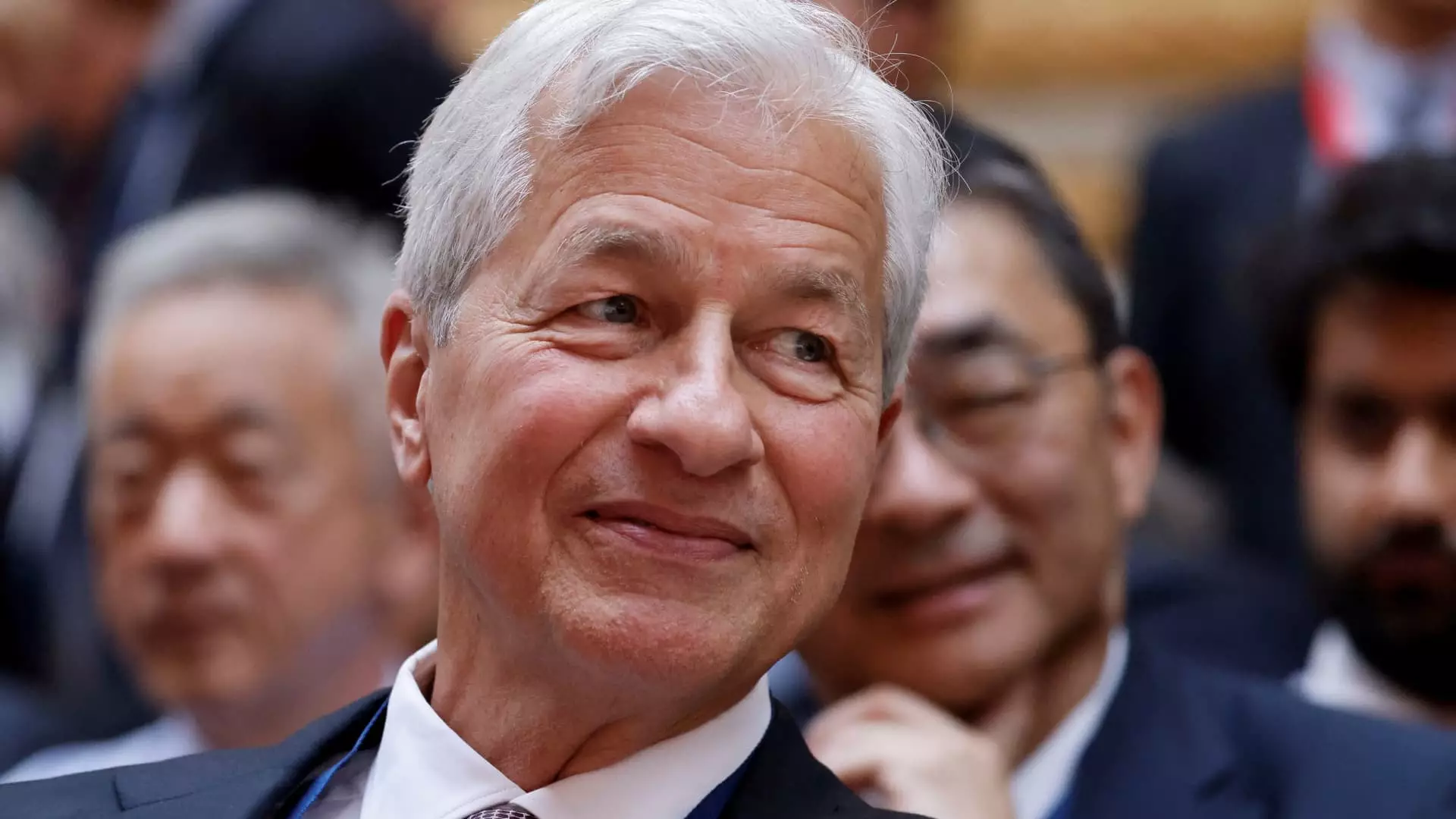JPMorgan Chase, the largest bank in the United States by assets, finds itself in an unusual yet advantageous position: possessing a significant excess of capital. After a record-breaking year of profits and revenues, CFO Jeremy Barnum has openly discussed the bank’s plans to mitigate the growing pile of unutilized cash, estimated at around $35 billion. The core of the strategy appears to be a ramp-up in share buybacks, a decision driven by both investor pressure and a cautious economic outlook.
In the world of finance, excess capital can be a double-edged sword. While it offers a safety net against economic downturns, it also raises questions about efficiency and long-term strategic deployment. Barnum characterized the bank’s situation as a “high-class problem,” acknowledging that JPMorgan must act judiciously to prevent this surplus from escalating unproductively. In light of the Basel III regulatory changes, which initially required banks to hold more capital, the bank conservatively stockpiled earnings. However, with the anticipated shift in regulatory posture from the incoming Trump administration, there appears to be less need for such caution, prompting a re-evaluation of strategies to deploy this capital effectively.
JPMorgan’s board faces considerable scrutiny from shareholders and analysts alike, prompting a clear communication strategy. Barnum emphasized the bank’s desire to maintain the excess cash at its current levels while also aiming to return capital to shareholders—primarily through stock buybacks. This approach not only satisfies investor demands but also aligns with JPMorgan’s overarching objective of maximizing shareholder value.
An integral part of this stock buyback strategy revolves around stock valuation. During JPMorgan’s annual investor day, CEO Jamie Dimon cautioned against excessive buybacks when the company’s shares were trading at approximately $205.88—a 52-week high at the time. He indicated that purchasing stock at prices significantly above tangible book value would be unwise, stating, “Buying back stock of a financial company greatly in excess of two times tangible book is a mistake.” This statement reflects a prudent approach aimed at safeguarding the company’s long-term financial health.
The bank’s stock trajectory has been upward since Dimon’s remarks, trading at a 22% premium compared to earlier values. This increase reaffirms Dimon’s caution, as overly aggressive buybacks could lead to diminished market confidence in future earnings or operational resilience. The delicate balance between returning capital to shareholders and maintaining adequate reserves becomes crucial, especially as economic forecasts continue to hint at potential recessions.
The concern about excessive capital brings to the forefront the management’s caution regarding economic uncertainties. Since late 2022, Dimon and other executives have frequent referenced the looming risks of a recession, underscoring the need to prepare for unpredictable market conditions. Barnum highlighted the “tension” between soaring asset prices and economic risks, indicating that a conservative yet calculated approach would be essential as the bank navigates such complexities.
Analysts suggest that any economic downturn could present significant opportunities for JPMorgan to deploy its excess liquidity through lending strategies, positioning the bank favorably against its competitors who may struggle during downturns. As Portales Partners analyst Charles Peabody articulates, “The best time to take market share is coming out of a recession, because your competitors are somewhat impaired.” This suggests that JPMorgan is not simply sitting on a pile of cash; rather, it is exploring strategic avenues that could enhance its market positioning in the face of economic challenges.
Overall, JPMorgan Chase stands at a crossroads, balancing the immediate demands of investors with long-term economic foresight. The decision to increase share buybacks while remaining cautious about excess capital reflects the bank’s understanding of the need for prudent financial management in a dynamic market landscape. As the bank continues to evaluate its strategies amid uncertain economic horizons, its ability to foster shareholder trust while maintaining operational agility will be pivotal for its sustained success in the future.


Leave a Reply